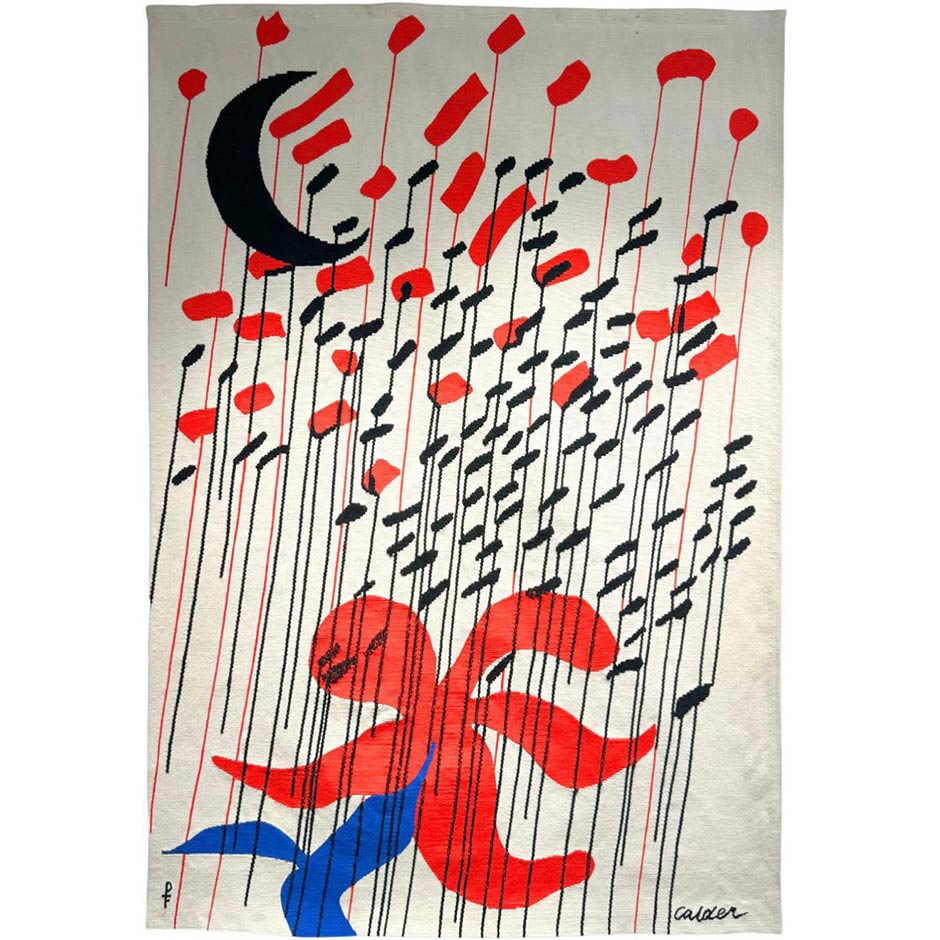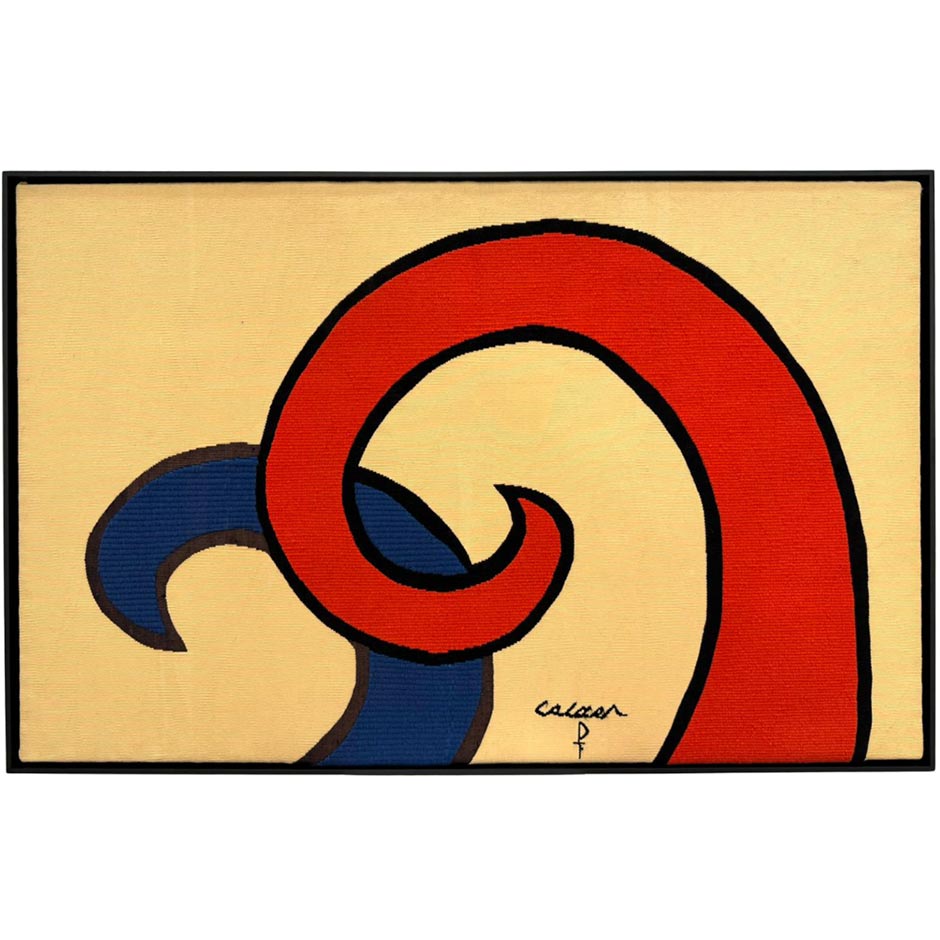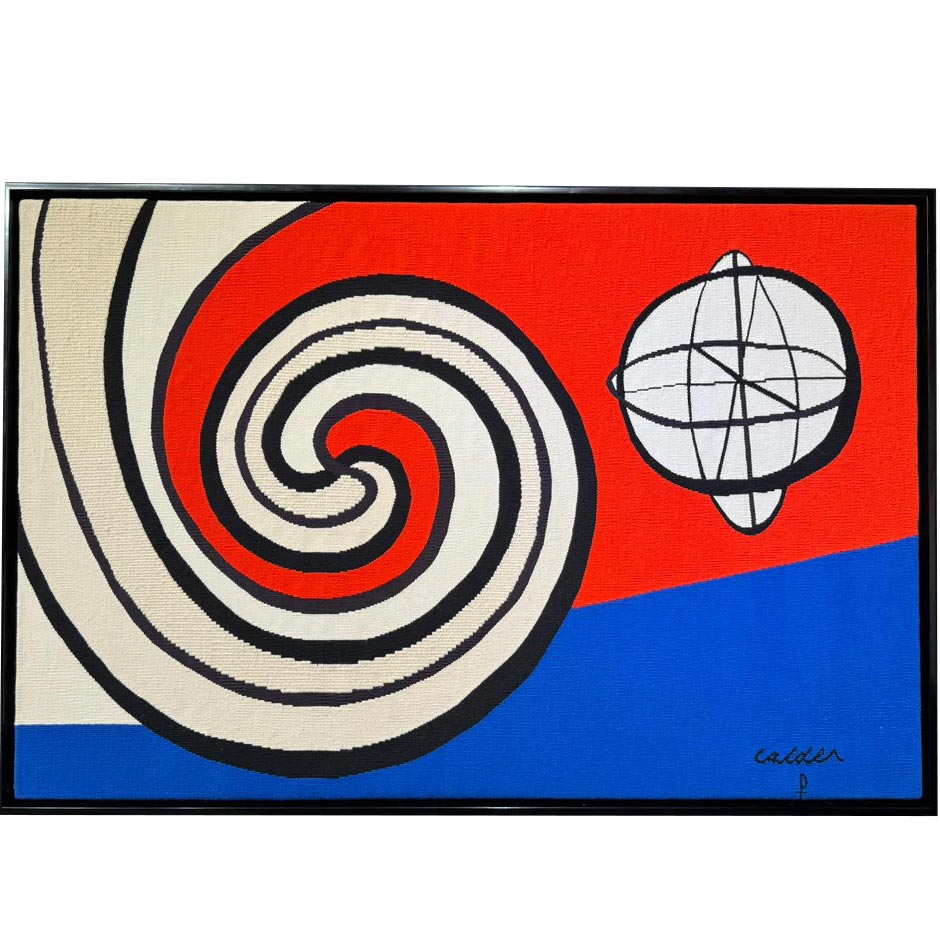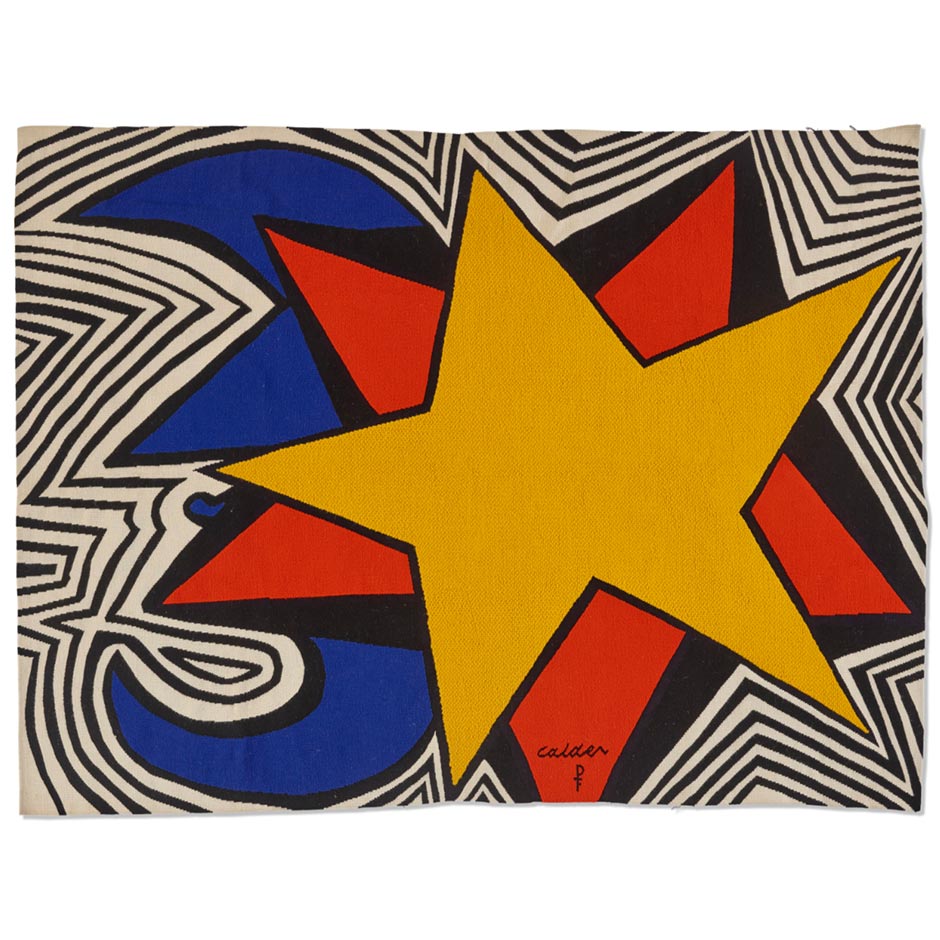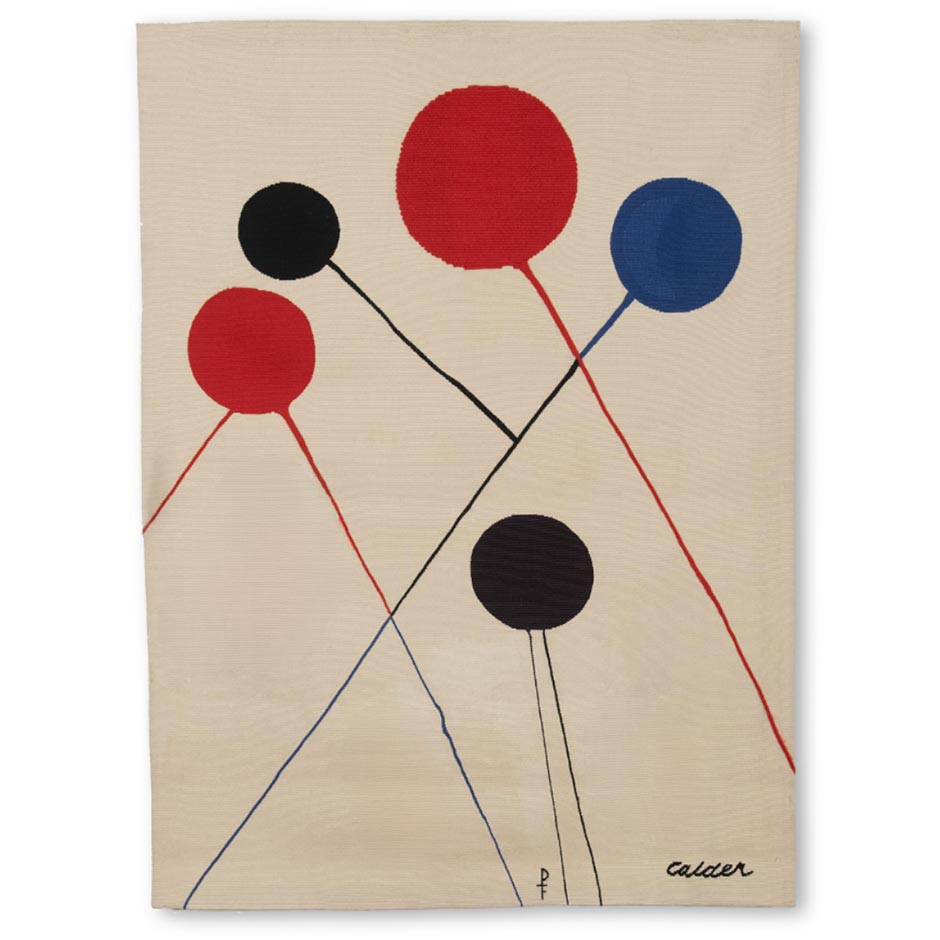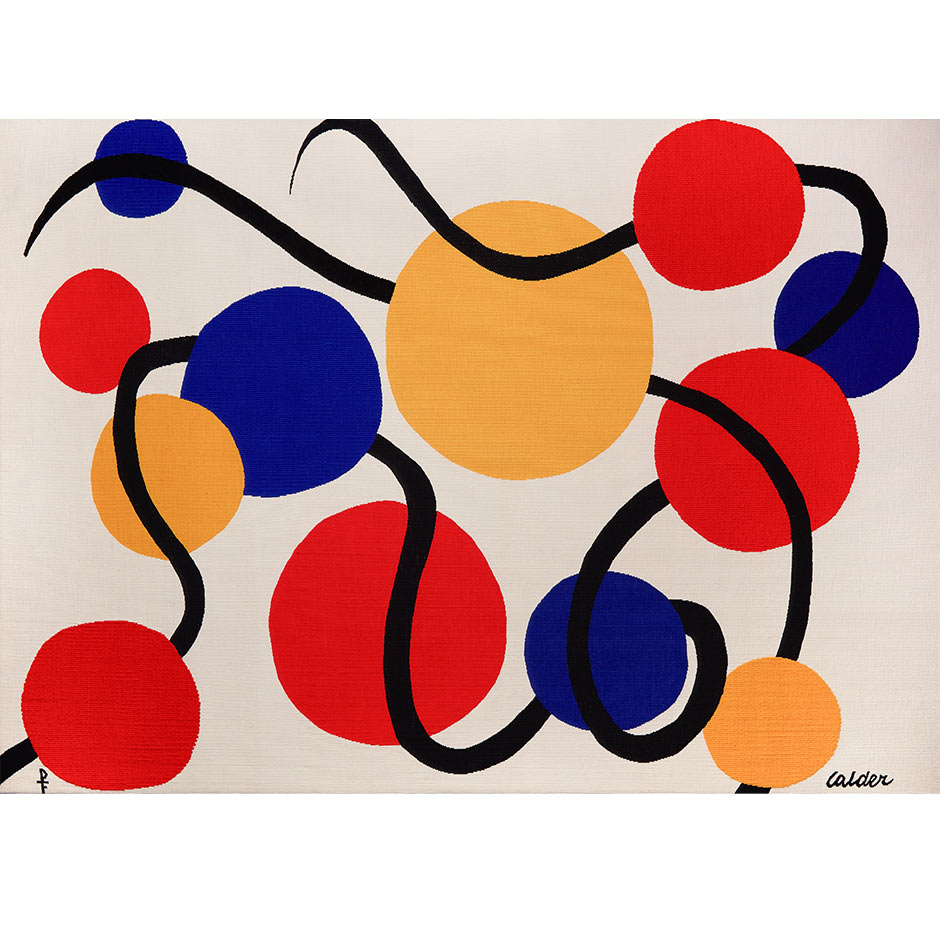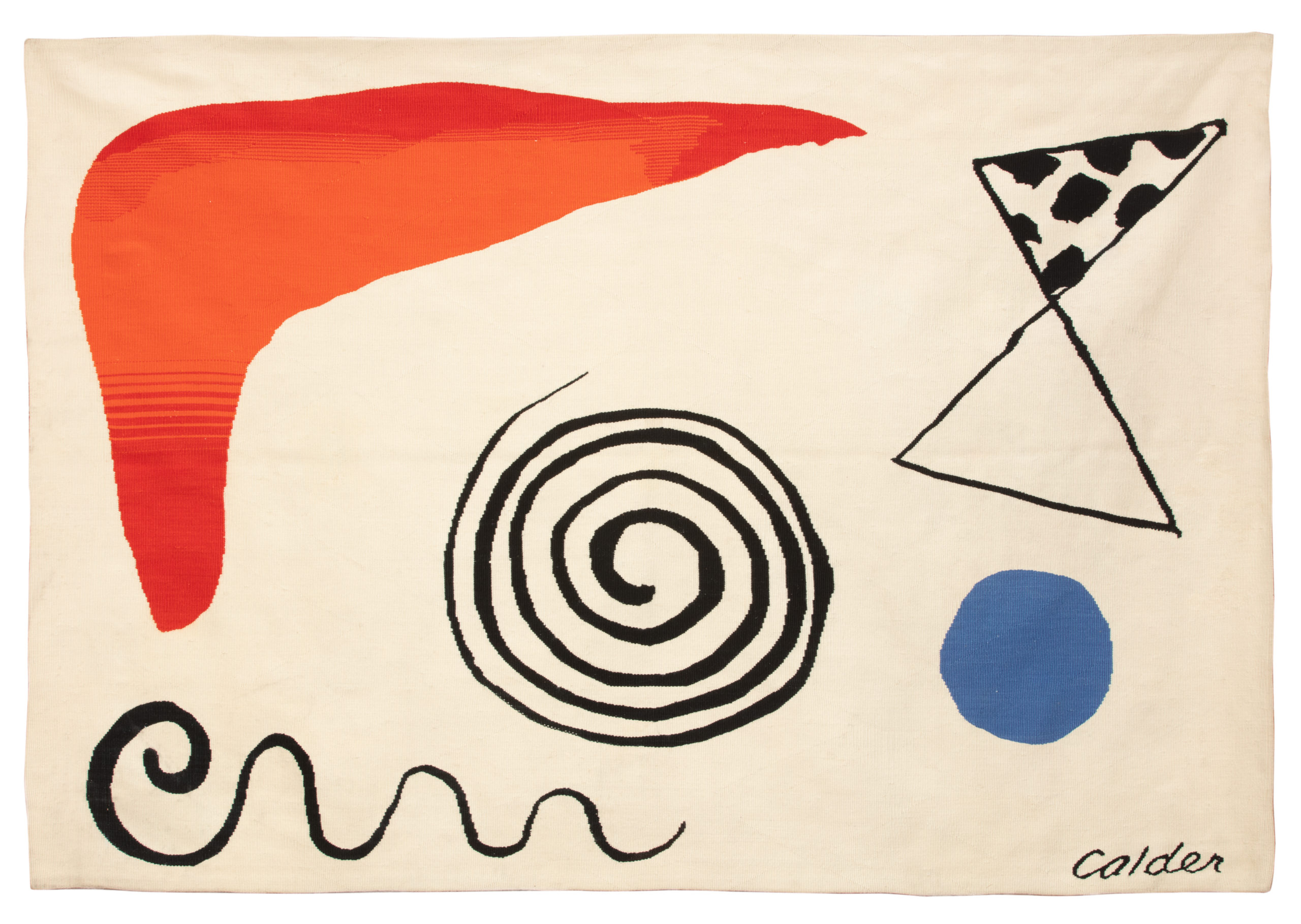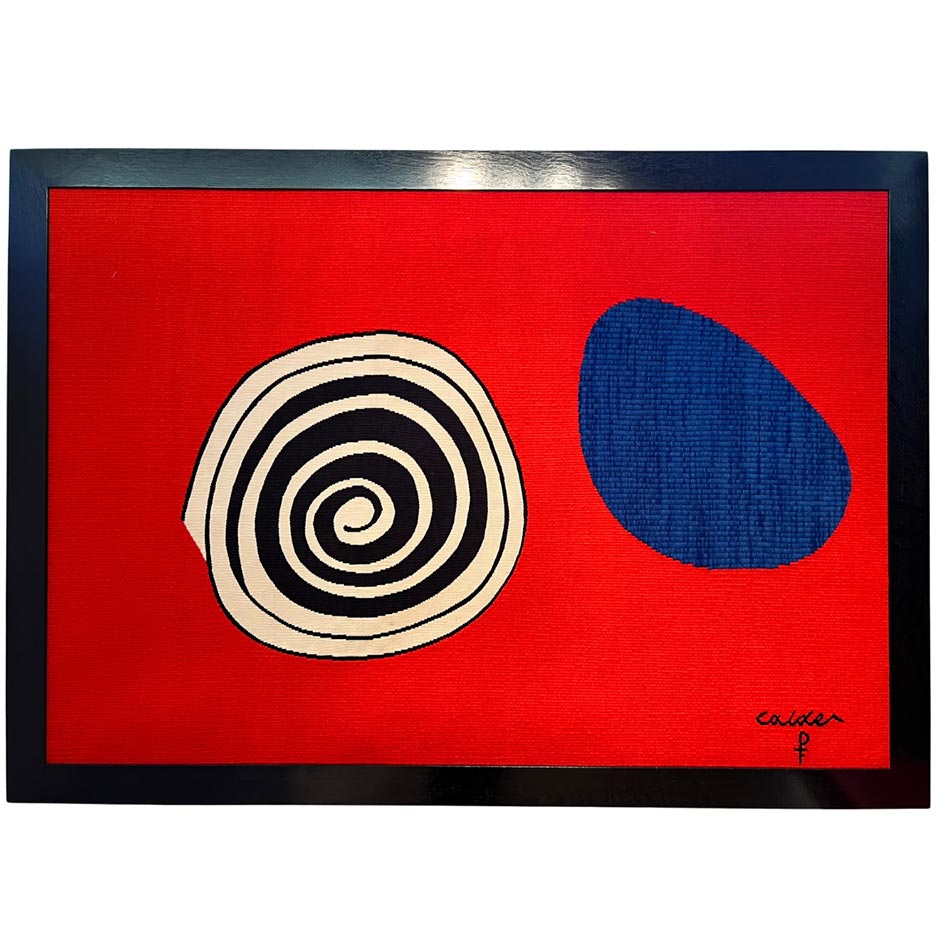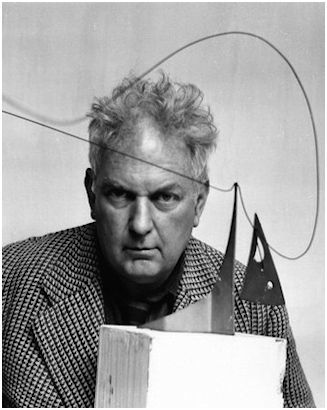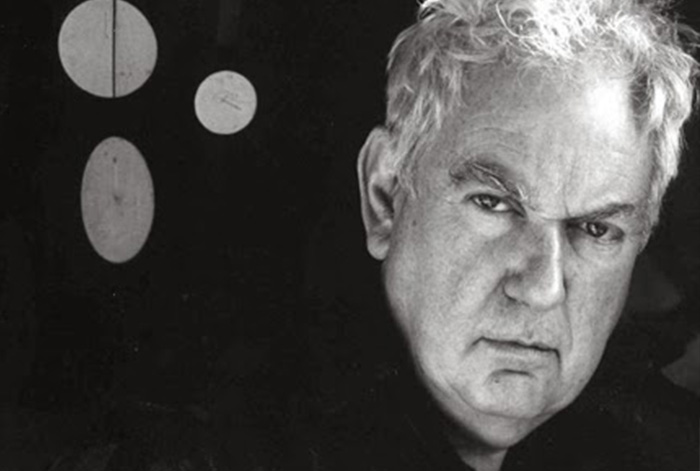Alexander Calder
(United States, 1898 – 1976)
Alexander Calder is one of the most prestigious and important tapestry artists, and the Boccara Gallery is proud to present the most high-level tapestries of his collection. Calder was very passionate about the ateliers in Aubusson and the masterpiece tapestries they created – reflecting his inimitable style and talent for color and form. Our selection of Calder tapestries are all in beautiful condition with bright colors, where abstract shapes create a striking effect.
Born in 1898 in Lawnton, Pennsylvania, Alexander Calder was very gifted with his hands at a very young age, presenting an advanced level of dexterity and nimbleness; he then naturally turned to mechanical engineering studies. In 1923, he decided to study drawing in New York in order to devote himself fully to art. He quickly developed a sculptural style and began to take an interest in the means of transcribing the movement, which would later become the main “material” of his work. Alexander Calder changed the course of modern art with his three-dimensional kinetic sculptures. Resonating with the principles of Futurism, Constructivism, and early non-objective painting, Calder’s sculptures and paintings consisted of boldly colored abstract shapes, which are made from industrial materials and hang in lyrical balance. Lightness prevails in his works, which thus break with the dense and imposing style of the time.
In 1963, Calder settled into a new workshop, overlooking the valley of the Lower Chevrière to Saché in Indre-et-Loire (France). It wasn’t long before tapestry became a new way for Alexander Calder to represent this balance that was both strange and perfect – as the art of tapestry was going through a rebirth since Jean Lurçat revived the Aubusson workshops and brought tapestry up to date. Working with textiles wasn’t new for Calder. “He made his own neckties,” reveals the artist’s grandson, Alexander S. C. Rower. “He also drew designs directly on canvas that my grandmother then hooked into rugs by hand.”
These tapestries are endowed with the very graphic style representative of the artist, with abstract forms, often poetic and boldly colored. Tapestry is a way to interpret your art and transcribe your gouaches on wider formats – and a more complex medium to work with. There are abstract patterns of primary colors, usual for the artist, as well as a white background that frees up a wide empty page.
Produced first by Picaud and later by Pinton Frères, the majority of the tapestries were made with Australian wool dyed to Calder’s specifications; each square yard of tapestry took a month to produce. These tapestries are endowed with the very graphic style representative of the artist, with abstract forms, often poetic and boldly colored. Their appearance turned connoisseurs’ heads, and tapestries soon hung in Calder retrospectives at the Guggenheim in 1964 and Paris’s Musée National d’Art Moderne in 1965 and were the subject of an exhibition at the Whitney in 1971.
According to J. Lipman (1980), “Calder’s tapestries are closely related to his gouaches, but they are much larger and often more complex in design. As in all his work the compositions are deceptively casual and have the same playful element that enlivens even the most powerful of his abstractions. The tapestry medium – like lithography and large-scale sculpture – is an example of the successful collaboration with skilled craftsmen that has characterized Calder’s later years. The weaver follows Calder’s forms exactly but improvises to vary the weaves and textures in a free interpretation of the overall design. The tapestries are fresh works of art in their own right, blending the inventiveness of the artist with that of the weavers” (157).
